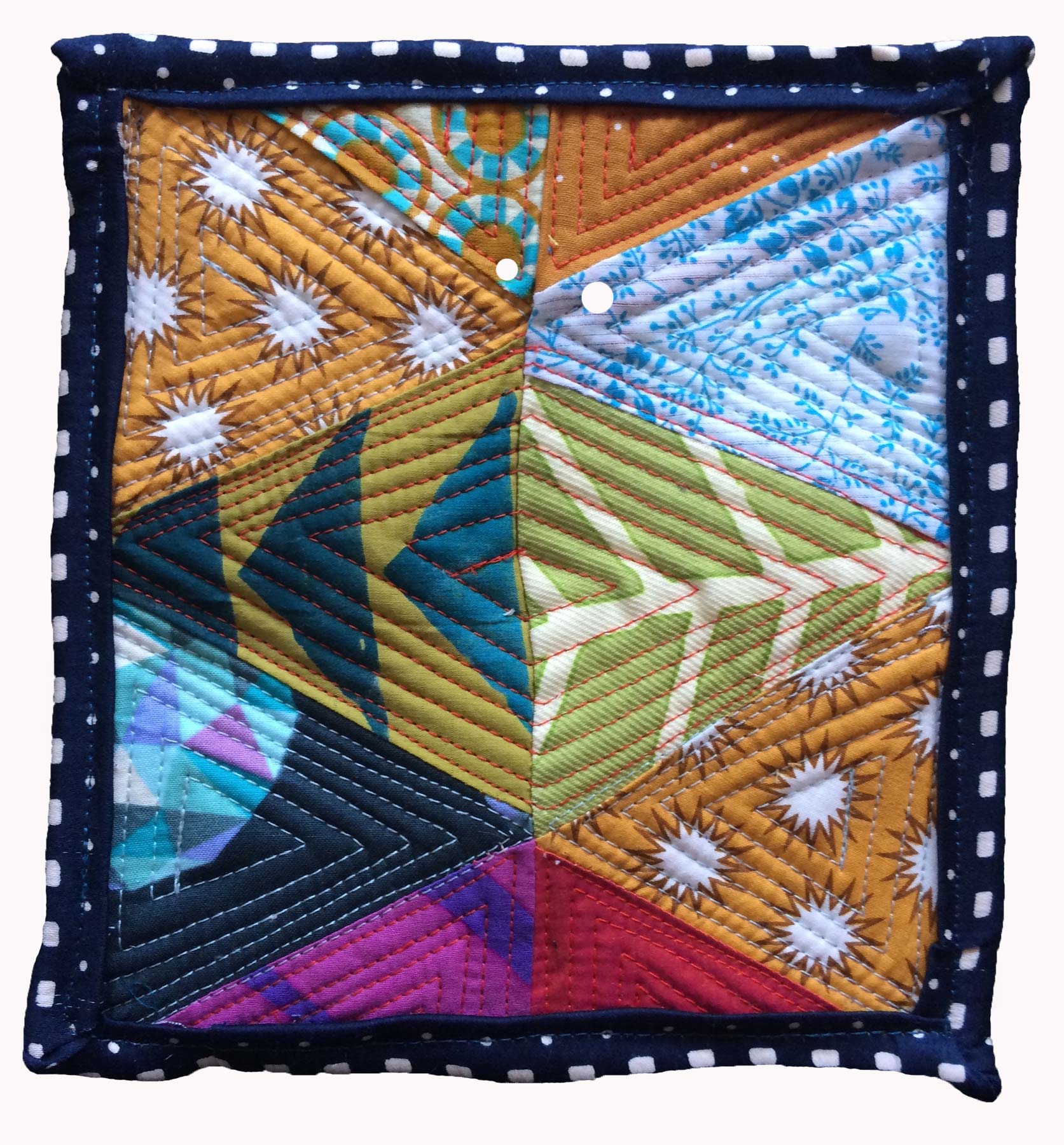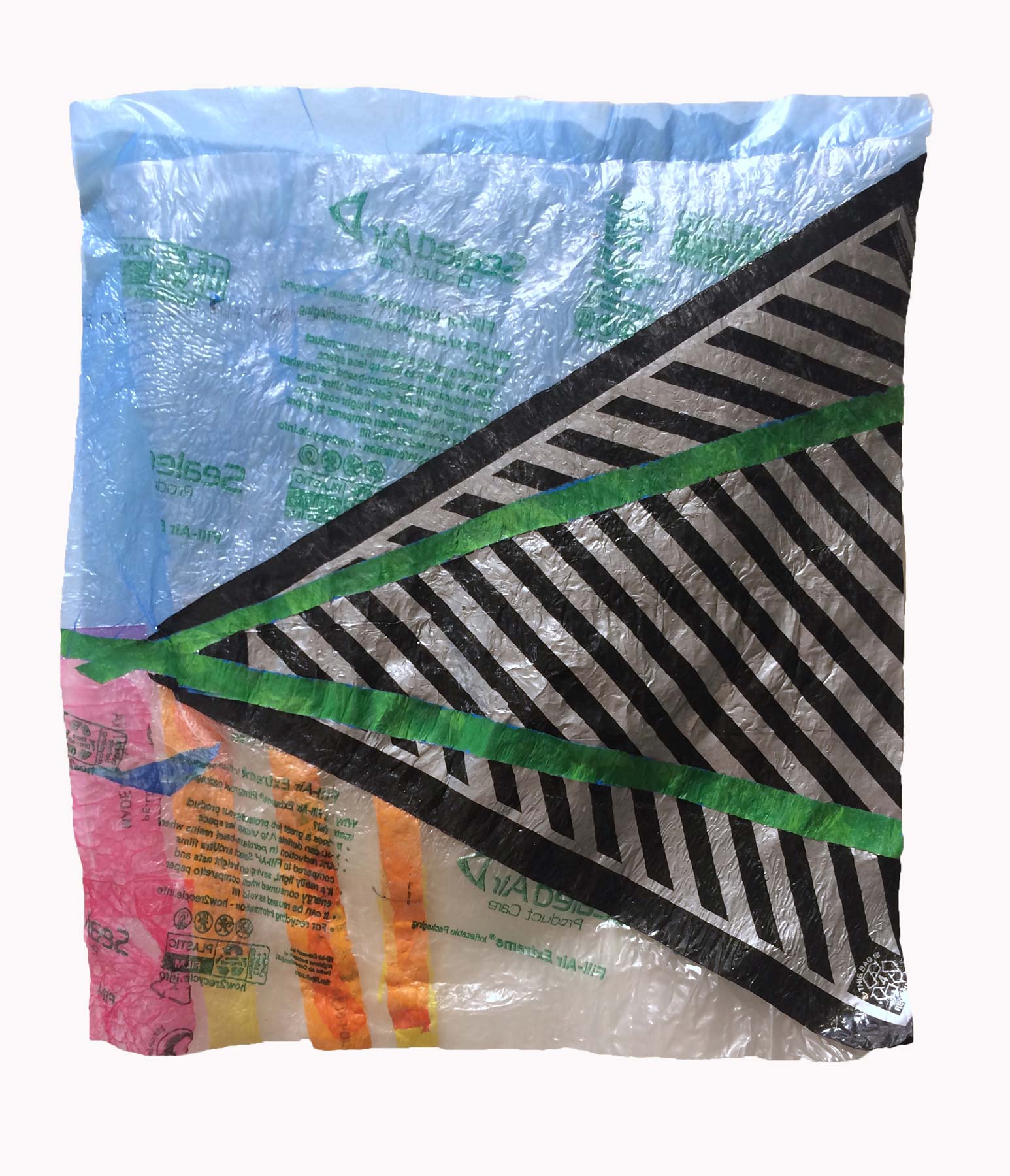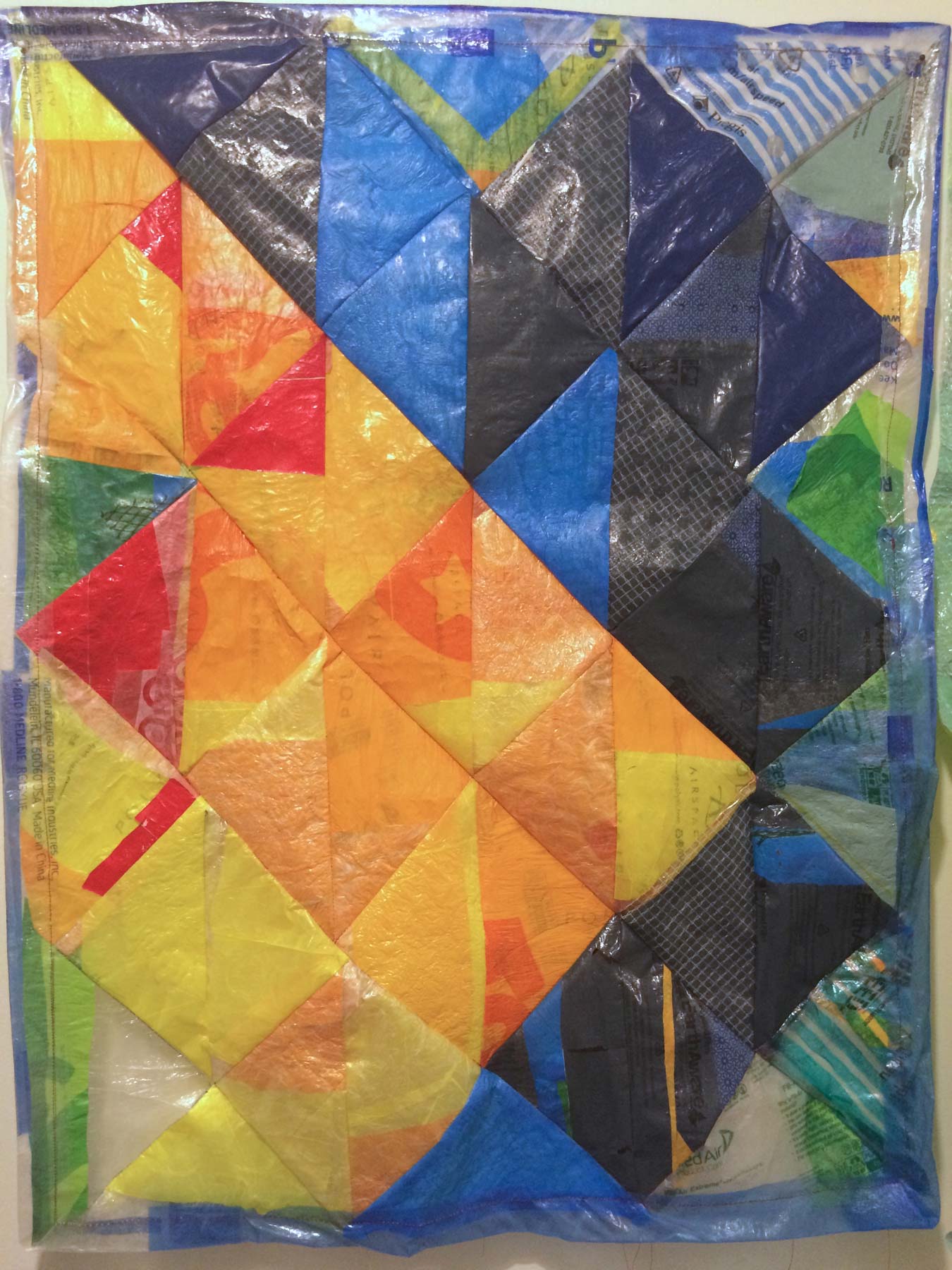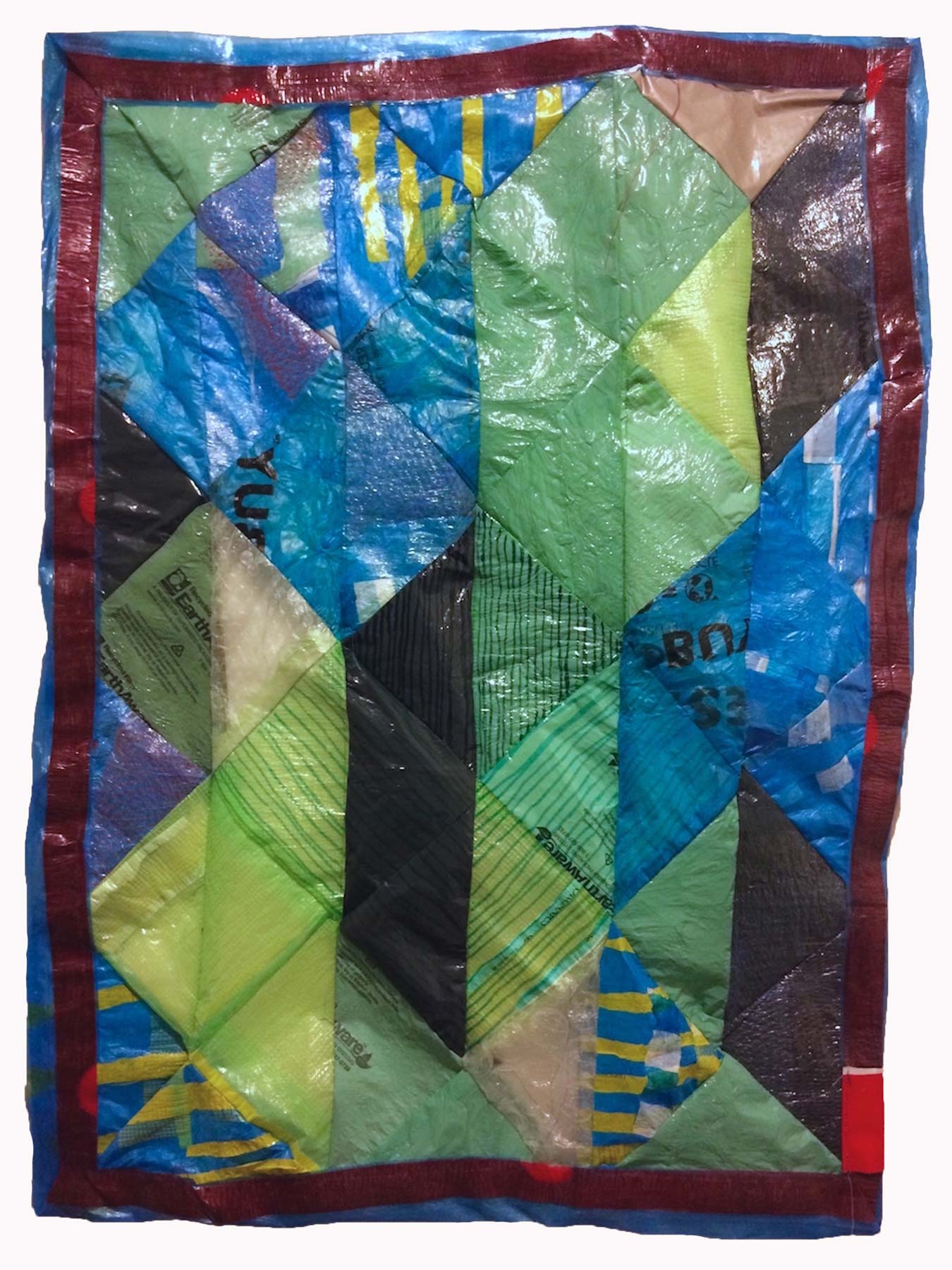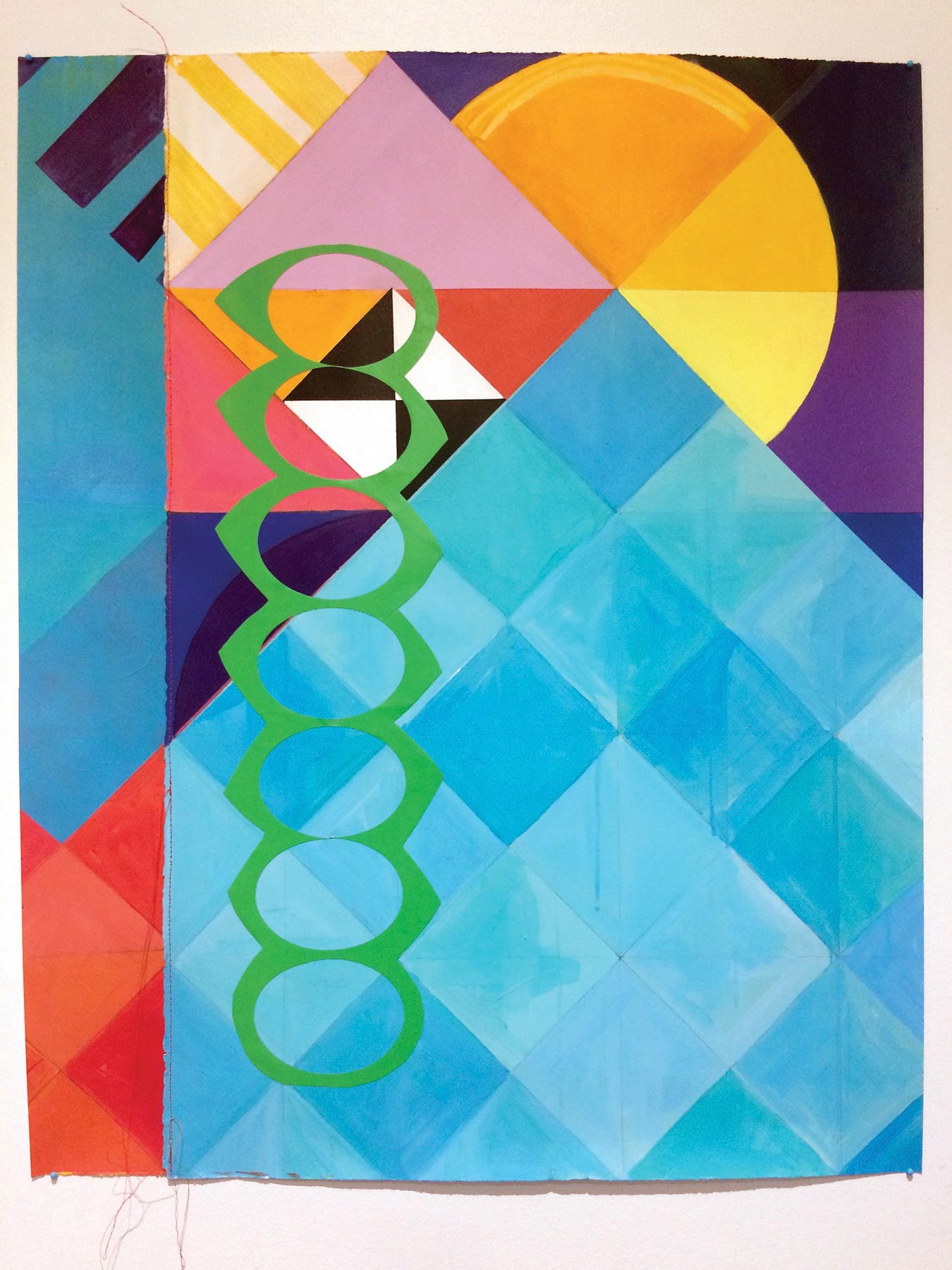
Tim Abel
2016–17 RAM Artist Fellowship Award Recipient
Tim Abel uses paper, found fabrics, and fused plastic to create process-based and material-focused works that embrace the repetitive and tactile quality of sewing. Abel has exhibited his paper based-works and installations in soap factories, man-made lagoons, and window-front galleries throughout the United States. He is the recipient of numerous grants and has extensive teaching experience.
Abel has his MFA from Minneapolis of College of Art and Design and his MA from New York University. He has lived numerous places including near lakes, cemeteries, mountains, railroad tracks, and transformed paper manufacturing warehouses. He just recently re-located from the Racine area to Tulsa, OK, with his wife and two children.
Artist Statement
The world is dictated by change, always becoming something other: day to night; seasonal shifts; growth to decay, etc. Welcoming this constant change as a routine, I actively try to find patterns. With my current body of work, I have been using the term “lookforpattern” to define my impulse to organize and my attempt to find temporary order. I am keen to use found materials, such as packing plastic and shopping bags or heavily treated papers, that can be cut down into new forms or used to create new patterns. These papers and fused plastic fabrics are used to create process-based and material-focused works that embrace the repetitive and tactile quality of sewing.
As a starting point, these works borrow vocabularies of order by translating found pattern from natural and man-made structures, ranging from quilting patterns to geology maps to honeycombs. However, in the making, the patterns that emerge come from long moments of trial and error and revision. A work can take anywhere from one day to many months, depending upon how many times it has been rearranged before the final pattern develops.
Tim Abel
2016–17 RAM Artist Fellowship Award Recipient
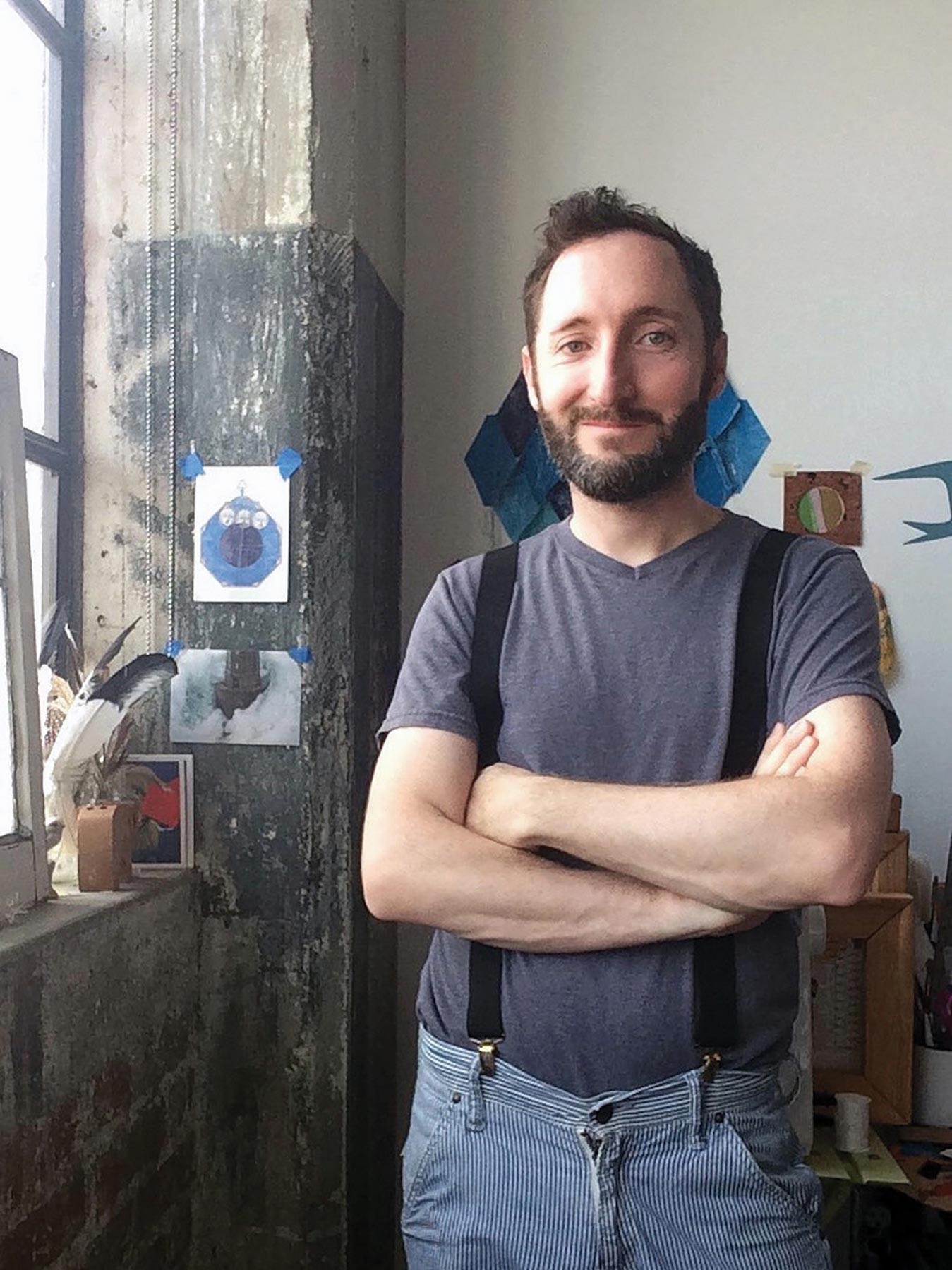
Tim Abel uses paper, found fabrics, and fused plastic to create process-based and material-focused works that embrace the repetitive and tactile quality of sewing. Abel has exhibited his paper based-works and installations in soap factories, man-made lagoons, and window-front galleries throughout the United States. He is the recipient of numerous grants and has extensive teaching experience.
Abel has his MFA from Minneapolis of College of Art and Design and his MA from New York University. He has lived numerous places including near lakes, cemeteries, mountains, railroad tracks, and transformed paper manufacturing warehouses. He just recently re-located from the Racine area to Tulsa, OK, with his wife and two children.
Artist Statement
The world is dictated by change, always becoming something other: day to night; seasonal shifts; growth to decay, etc. Welcoming this constant change as a routine, I actively try to find patterns. With my current body of work, I have been using the term “lookforpattern” to define my impulse to organize and my attempt to find temporary order. I am keen to use found materials, such as packing plastic and shopping bags or heavily treated papers, that can be cut down into new forms or used to create new patterns. These papers and fused plastic fabrics are used to create process-based and material-focused works that embrace the repetitive and tactile quality of sewing.
As a starting point, these works borrow vocabularies of order by translating found pattern from natural and man-made structures, ranging from quilting patterns to geology maps to honeycombs. However, in the making, the patterns that emerge come from long moments of trial and error and revision. A work can take anywhere from one day to many months, depending upon how many times it has been rearranged before the final pattern develops.
Interview with the Artist, January 2017
Would you please describe your work—what materials you use; what subject matters you explore?
I like the surprise of working with and transforming common materials such as paper and plastic shopping bags or packing supplies. I explore a tactile response through sewing—with constant revisions and reworking, the materials lead the making.
Using embroidery, sewing, and quilting, I quietly confront ideas of masculinity through my method of making. I use traditional quilting patterns, or the quilting notion of using a repeated shape to create a sewn composition, as my current guiding method. My chosen materials of paper and plastic also eschew traditional norms of permanency, as does my deliberate preference to create temporary installations.
How often are you in your studio? Do you work outside of your studio much or at all?
As a father of two boys (a 5-year-old and 7-month-old), I have very fragmented studio time. My wife (a poet) and I were just joking about our creative practices—saying that our sons’ Maslow’s Hierarchy of Needs are like two little triangles teetering on top of our heads. Their triangle needs comes first then come ours. It is a crazy balancing act, and can be chaotic at times, but I can’t think of any other way of being. I am happy to have my tiny art directors as part of my practice.
To optimize work time, my studio has always been part of my living space: converting the dining room into a studio, carving out a section of the kitchen, transforming the front porch, having my work table be one more element in the living room, etc. I have also tried to include my oldest son in my work time so he has an easel next to mine or can climb up on to my work table and work/play on one end while I sew on the other. When he can, has also been included when installing my large paper works for shows. If all else fails, I have the time after they [my children] go to bed, which lately means about 10:00.
As a way to be realistic about this ultimate fragmenting of time, I keep a running wall of small works. It could be a fragment of fabric, a photo I found during the day, a small paper collage, or older work that finds resonance. I see this as a gathering practice: it gives me a chance to add a single element and re-arrange or contextualize a larger work. I think of the individual elements as something akin to quilt blocks and the whole arrangement becomes an ever-evolving wall quilt. This gives me a chance to work, even in small moments. I also keep as many larger projects going at one time as I can, so that I can be ready if I get a moment of focused time.
I am also an art educator, so my professional work life runs parallel to my creative work life. I have been lucky to able to coordinate collaborative projects that call on my own practice: making printmaking-based bus murals with teens; working with artists to develop collaborative projects for children and families; transforming printmaking into a digital product that can live as a digital animation or banner both in the U.S. and in South Africa.
What inspires you most these days? But also what do you go to bed thinking about most nights?
Oh, where do I start? I will try to answer this question backwards. For me, at the core of it, I am constantly baffled by the world. My mind defaults to geologic time and Carl Sagan’s blue dot when I think about my place in the world. And at the most local time level, the direction in politics and the normalization of political expediency over human ethics has been and continues to be a large source of anxiety for me.
That said, I obsess over trying to find order in the world around me. For the last two years, I have been documenting pattern as an almost daily ritual: parking lot stalls, cast shadows from chain-link fencing, crosswalks, and gas station cover patterns. This practice keeps me looking. I think it gives me a net to deal with the world, so I can then go and make art to then internalize that order, when the world at large seems to lack it.
Why the RAM Artist Fellowship?
I feel like my interest in craft–sewing, quilt-based patterns, and handiwork—fits and finds a home with RAM. This year has been a year of flux, but my work is partly about responding and normalizing flux, so I feel very well on my path of making.
Sample of Work
Click/tap an image for more information
Stay in Touch
The Racine Art Museum and RAM’s Wustum Museum work together to serve as a community resource, with spaces for discovery, creation, and connection. Keep up to date on everything happening at both museum campuses—and beyond—by subscribing to our email newsletter:


